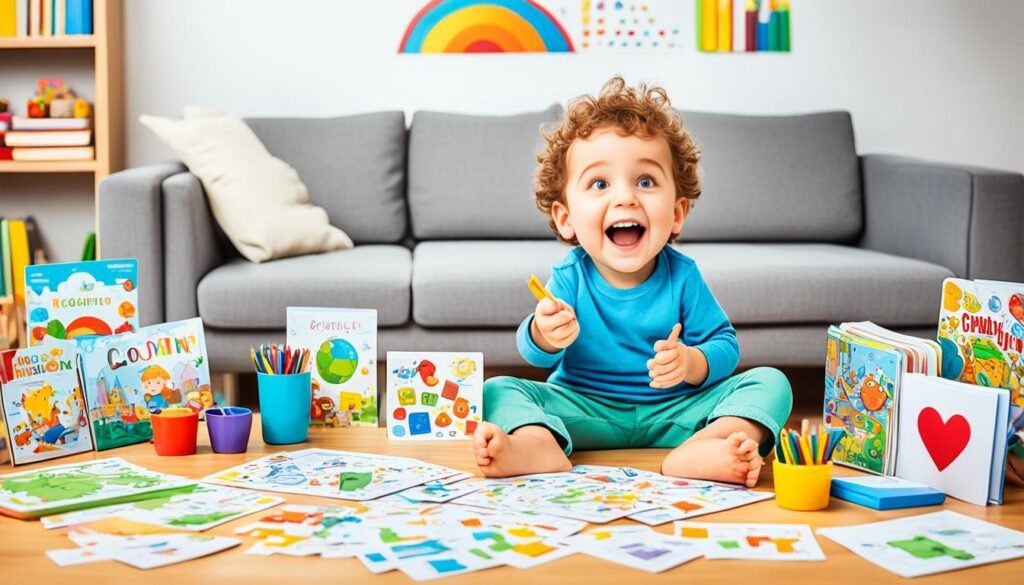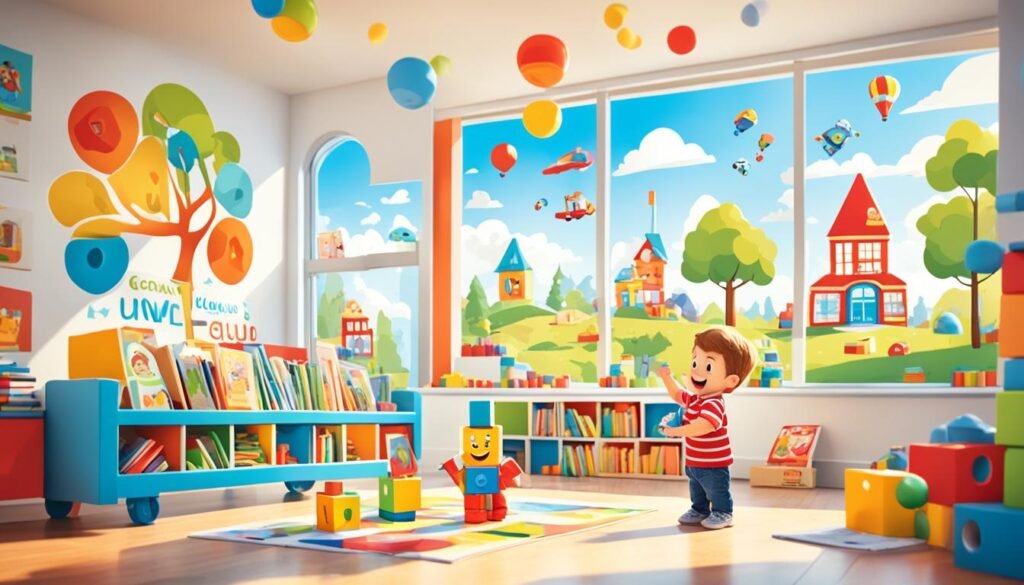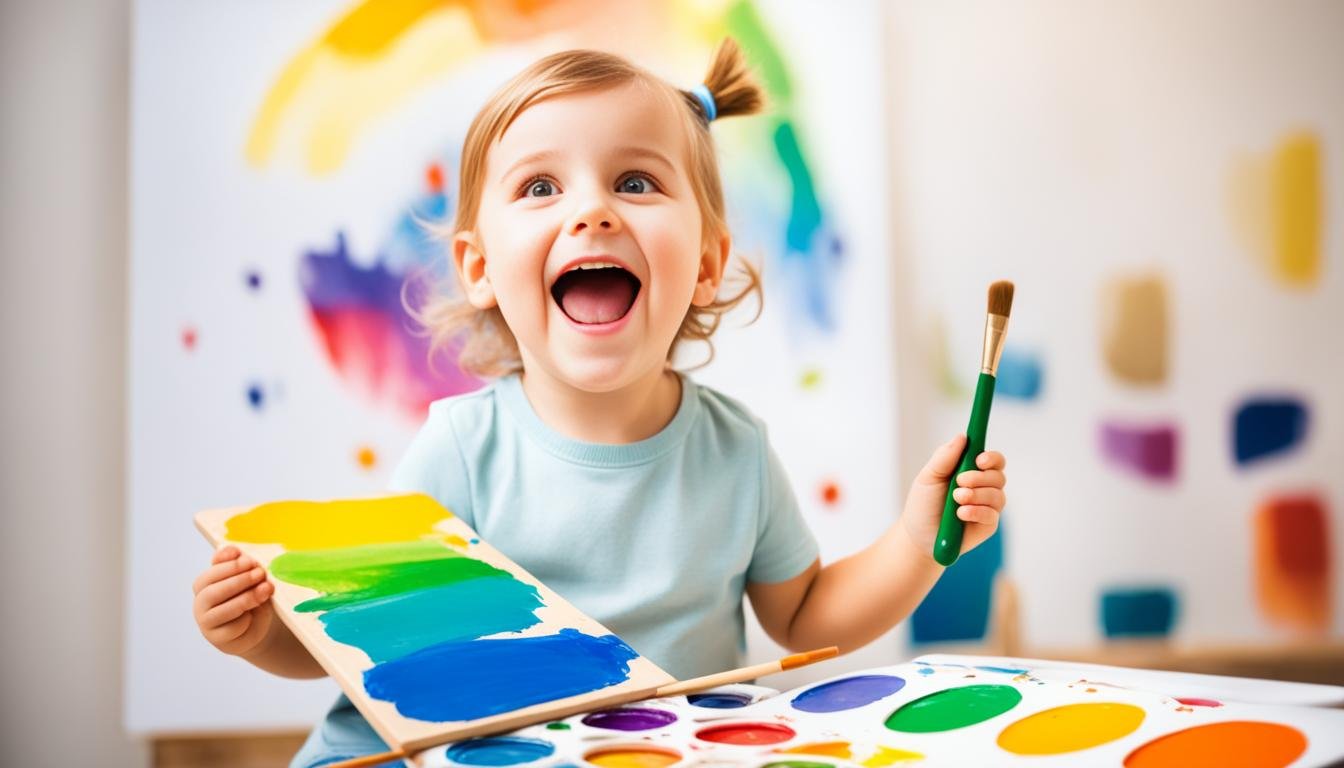In today’s fast-paced world, it’s key to keep learning new skills. This is vital for both personal growth and professional success. But, finding time and motivation to learn can be tough. How can you turn your daily tasks into learning chances? Let’s look at ways to make learning a part of your life.
These strategies can help you blend learning into your daily life. They also open up the benefits of a mindset focused on learning.
Key Takeaways
- Discover effective methods to incorporate learning into your daily routines
- Understand the importance of continuous learning for personal and professional development
- Learn how to identify your learning goals and create a personalized learning schedule
- Explore various learning styles and techniques to maximize the effectiveness of your daily practice
- Discover strategies to make learning a sustainable and enjoyable part of your lifestyle
Understanding the Importance of Daily Learning
In today’s fast-changing work world, learning new things is key to doing well over time. Lifelong learning practices give you a big edge, as those who adapt and act quickly are in high demand. By focusing on your own self-improvement and continuous learning, you open doors to more chances for career development and personal growth.
The modern job scene needs a new way of thinking – where learning is the job itself. Your capacity for learning is what you use to move forward in your career. Being able to learn on the go and reinforce your knowledge every day is key. By embracing this squiggly way of learning and upskilling yourself, you can find new and exciting opportunities.
Adding self-development and routine integration of learning to your daily life pays off big in the long run. By making learning a part of your daily routine, you build a mindset of ongoing growth and flexibility. This is a big plus in today’s fast-paced world.
“The illiterate of the 21st century will not be those who cannot read and write, but those who cannot learn, unlearn, and relearn.” – Alvin Toffler
Identifying Your Learning Goals
Before starting to learn, it’s key to set clear learning goals. What drives you to learn new things? Knowing your purpose-driven learning goals keeps you focused and motivated. Think about what motivates you and how it fits with your self-awareness and career aspirations.
Ask yourself: What skills or knowledge do you want to gain? How will this knowledge help you personally or in your job? How will it help you grow? Understanding your learning goals and why you want to learn makes your learning more effective and rewarding.
Be honest about your learning blind spots. Knowing where you’re not confident can help you focus your learning. Don’t hesitate to get advice from mentors or experts who can guide you.
Adding learning to your daily life can change everything, starting with clear learning goals. Aligning your learning with your goals can open up new chances for growth and happiness.

| Learning Goal | Purpose | Potential Benefits |
|---|---|---|
| Develop public speaking skills | To improve confidence and communication abilities for career advancement | Enhanced presentation skills, better job opportunities, increased self-assurance |
| Learn a new language | To broaden cultural understanding and expand professional opportunities | Improved cognitive abilities, increased job prospects, deeper cultural connections |
| Master a new software program | To enhance productivity and efficiency in the workplace | Increased job value, streamlined workflows, better problem-solving skills |
Incorporate Learning into Daily Routines
Making learning part of your daily life can make it fun and smooth. By finding purpose in learning, you stay motivated and engaged. Learning new things boosts your skills and opens doors for you. It helps you grow personally and professionally.
Finding Meaning in Your Learning Process
Learning every day is more than just a task. Look for deeper meaning in what you learn. Think about how it can make your life better, in both your personal and work life. With curiosity and a love for learning, the journey is as valuable as the goals you reach.
Personal and Professional Benefits of Continuous Learning
Learning daily brings many benefits. It boosts your confidence and broadens your view. At work, it sharpens your skills and makes you ready for changes. Continuous learning can lead to new career paths. By seeing learning as a lifestyle, you’re growing and improving your life.
“The more that you read, the more things you will know. The more that you learn, the more places you’ll go.”
– Dr. Seuss
Creating a Daily Learning Schedule
Creating a daily learning schedule is key to making learning a regular habit. By planning your day to focus on learning, you keep your goals in sight. This way, you make sure learning stays a priority.
Structuring Your Day for Optimal Learning
Start by finding out when you’re most alert and focused. Use these times for learning, whether it’s in the morning, at noon, or at night. Try out different schedules to see what fits your life and energy best.
Setting Aside Time for Learning Activities
- Set aside a specific time each day for focused learning, like reading, watching courses, or practicing a skill.
- Blend learning into your daily life by listening to podcasts while commuting or playing learning games during breaks.
- Make a special spot at home for learning, where you can focus without distractions.
Having a daily learning schedule helps you build a habit of continuous learning and growth. This method keeps you motivated, focused, and excited about learning.
| Time | Learning Activity |
|---|---|
| 7:00 AM – 8:00 AM | Read educational articles |
| 12:00 PM – 1:00 PM | Watch online course videos |
| 7:00 PM – 8:00 PM | Practice new skills or hobbies |
It’s important to find a daily learning schedule that fits your life and likes. This makes learning a natural part of your day.

Choosing Your Learning Methods
Learning is a personal journey. What works for one person might not work for another. To improve your daily learning, try different learning methods to see what suits you best.
Experimenting with Different Learning Styles
Everyone learns in their own way – some like watching videos and infographics, while others prefer listening to podcasts and audiobooks. Some people learn best by doing things with their hands, while others remember better through reading and writing. It’s a good idea to try out various methods to see which ones work best for you.
Utilizing Technology for Convenient Learning
In today’s world, technology-enabled learning has changed how we learn. With mobile learning apps and micro-learning content, learning on the go is easy. Look into online courses, webinars, podcasts, and other digital tools that let you learn anytime, anywhere.
| Learning Method | Potential Benefits |
|---|---|
| Reading | Promotes deep focus and comprehension |
| Watching Videos | Engages visual and auditory senses |
| Listening to Podcasts | Allows for multitasking and on-the-go learning |
| Hands-on Activities | Facilitates kinesthetic and experiential learning |
By trying out different learning methods and using technology, you can make learning fit easily into your daily life.
Making Learning Part of Your Routine
Adding learning routines and daily learning habits to your life is key to success. By making habitual education a part of your daily life, you can enjoy the benefits of lifestyle learning. The secret is to find simple ways to add learning to your daily activities.
Look for chances in your day to fit in learning. You could listen to educational podcasts on your way to work, read articles during lunch, or learn a new skill while doing chores. There are many ways to make learning a seamless part of your routine.
Try different methods to see what suits you best. Some good ways include:
- Setting aside a specific time each day for focused learning activities
- Incorporating learning into your daily tasks, such as learning a new language while cooking or exploring science concepts with your children
- Using technology to access educational content on-the-go, such as listening to podcasts or watching online tutorials
By making learning routines and daily learning habits a natural part of your life, you’ll see the power of habitual education. You’ll enjoy the many benefits of lifestyle learning.

“The key to successful learning is to make it a consistent and seamless part of your daily life.”
The journey of lifestyle learning is about embracing knowledge and growth in your daily life. It’s not about being perfect. Start small, try new things, and see how your daily learning habits turn into a lifelong love for learning.
Adopting Daily Learning Habits
Creating daily learning habits is key to making learning fun and lasting. By picking learning habits that fit you, learning becomes a big part of your day.
To start daily learning habits, figure out the best times and ways to learn. Everyone learns differently, so try out various learning styles to see what works best for you.
- Set realistic learning goals and break them down into smaller tasks.
- Add learning activities to your daily routines and habits.
- Make learning a regular and rewarding activity.
- Use technology and digital tools to make learning easier and more accessible.
- Check and tweak your learning habits often to keep them useful and fun.
By reinforcing your learning routines, you can make learning habits a natural part of your day. Embrace the power of habit formation and enjoy the perks of ongoing learning for your personal and work growth.
How to Combine Learning with Existing Tasks
Making learning part of your daily life doesn’t have to be hard. You can do this by adding it to your daily activities. This way, you can use your time better and make learning easy to fit into your day.
Multitasking: Incorporating Learning into Chores
Household chores can also be learning chances. For instance, you can listen to educational podcasts while folding laundry. Or, you can learn during your daily commute. This method, called “learning while doing,” helps you blend learning into your daily life.
Listening to Educational Podcasts During Commutes
Your commute can be a big part of your day. It’s a great time to learn. By listening to educational podcasts, you can turn your commute into a chance to learn. This way, you can multitask and learn at the same time, using your time well.
| Learning Method | Pros | Cons |
|---|---|---|
| Incorporating Learning into Chores |
|
|
| Listening to Educational Podcasts During Commutes |
|
|
By integrating learning into daily tasks and finding chances to learn while doing, you can use your time well. Whether it’s multitasking during chores or commute learning with podcasts, the key is to keep learning. Find creative ways to make learning part of your daily life.

Making Learning Fun and Engaging
Learning doesn’t have to be a chore. By adding gamified learning, learning through play, and interactive learning, you can make learning fun and rewarding. Embrace learning challenges and learning rewards to turn learning into a game.
Using Gamification Techniques
Gamification adds game-like elements to learning. It uses points, badges, leaderboards, and more to make you want to compete and achieve. This keeps you motivated and engaged in reaching your learning goals.
Setting Fun Challenges and Rewards
Make learning fun by setting fun challenges and learning rewards for yourself. Create quizzes, puzzles, or scavenger hunts that test your knowledge in a fun way. Reward yourself with small treats or achievements after completing these challenges.
By using gamified learning, learning through play, and interactive learning, you can change how you see education. Start adding more learning challenges and learning rewards to your daily routine. See how it can make learning more enjoyable.
“Learning is the only thing the mind never exhausts, never fears, and never regrets.”
– Leonardo da Vinci
The Role of Social Learning
Learning with others can make it more fun and rewarding. By joining groups, you can see things from different views, meet people who think like you, and learn new things. These groups can be online forums, local clubs, or professional groups. They give you a place to learn, question your beliefs, and stay on track.
Joining Learning Communities and Groups
Look for places where you can learn with others who share your interests. You can find:
- Online forums and discussion boards focused on your areas of study
- Local meetup groups or clubs dedicated to specific hobbies or professional development
- Study groups that gather regularly to discuss course materials or work on projects together
- Professional associations or industry-specific communities that offer educational resources and networking events
Finding a Study Partner or Mentor
Think about finding a study partner or mentor for one-on-one help. A study partner can keep you motivated, offer new ideas, and make learning a team effort. A mentor can share their knowledge, give you feedback, and help you find new chances.
Whether you’re in groups or working with one person, the main thing is to work together. Learning with others can open up new paths, improve your skills, and make growing and learning more fun.

Leveraging Resources for Continuous Learning
In today’s fast-changing world, learning every day is key for growth. Luckily, there are many resources to help you learn, like online courses, webinars, books, and articles. Using these resources helps you keep learning and stay current with new trends in your interests.
Online Courses and Webinars
The internet has changed how we learn, offering many online courses and webinars. These online learning resources let you learn at your own speed. You can find everything from certification programs to workshops that help you build new skills.
Books, Articles, and Other Reading Materials
Books, articles, and white papers are still great for learning too. You can choose between physical or digital copies. These materials let you learn on your own, exploring topics you find interesting.
Using these different learning tools helps you keep learning for life. The important thing is to pick resources that match your goals. And always be open and curious in your learning.

“The more that you read, the more things you will know. The more that you learn, the more places you’ll go.” – Dr. Seuss
Tracking Your Progress and Staying Accountable
Keeping an eye on your learning progress and celebrating your wins is key to staying motivated. Setting clear learning milestones helps you stay on course and feel proud when you hit them. Don’t forget to celebrate your learning achievements, big or small. This boosts your positive habits and keeps you going.
Setting Milestones and Celebrating Achievements
Break your big goals into smaller, achievable steps. This could mean learning a new skill, finishing a course, or understanding a tough topic. When you hit these learning milestones, pause to think about your progress and celebrate your wins. Treat yourself or share your success with others.
Journaling Your Learning Journey
Learning journaling helps you stay on track and improve. Write down your learning experiences, challenges, and what you’ve learned. This helps you see how far you’ve come and spot areas to get better. Think about what works for you and how to improve your learning strategies.
![]()
“Tracking your progress and celebrating your achievements is crucial for maintaining motivation and engagement in your educational journey.”
Learning well means seeing it as a journey of growth. By setting learning milestones, celebrating your wins, and journaling your journey, you keep yourself on track. This approach makes you self-accountable and always looking to get better.
Integrating Play and Creativity in Learning
To make learning fun and effective, add play and creativity to your daily routine. Using playful learning techniques, you boost curiosity, remember information better, and find deeper meaning in what you learn.
Exploring Learning Through Play Techniques
Try out gamification, puzzles, and hands-on activities for playful learning. These creative learning techniques spark your curiosity and make learning fun and experiential.
Utilizing Creative Outlets to Enhance Learning
Art, music, or storytelling can also boost your learning. These creative outlets help you understand better and make learning more engaging.
By learning through play, you open up new possibilities. This approach turns your learning into a rewarding and life-changing experience.

Adapting Your Learning Approach to Challenges
Starting your learning journey, you might face different challenges or changes in what you need and like. Embrace the “squiggly” nature of learning. This means always changing how you learn to fit your new needs. By staying flexible and quick to adapt, you keep your adaptable learning effective and in line with your evolving learning needs.
Embracing the ‘Squiggly’ Nature of Learning
Learning isn’t a straight path; it has twists and turns. Learning agility helps you move through these changes. Be open to trying new personalized learning ways, change your methods, and welcome new ideas. This flexibility helps you beat learning challenges and keeps your learning flexibility strong.
Adjusting Learning Strategies for Evolving Needs
Your learning needs change as your life and goals do. Check on your progress often and be ready to change your learning ways. Try out new learning methods and tech, and don’t hesitate to drop old ones that don’t work anymore. By listening to your evolving learning needs, you keep your adaptable learning journey vibrant and growing.
“The only way to make sense out of change is to plunge into it, move with it, and join the dance.” – Alan Watts

Building a Supportive Learning Environment
Creating a good learning space, both in place and with others, can make learning better. Having a special area for learning and getting others to join you can increase your motivation and fun. It also makes learning more enjoyable.
Creating a Dedicated Learning Space
Choose a specific spot in your home or office for learning. This dedicated learning space should be free from distractions and comfy. Add things that help your learning, like comfy chairs, good lighting, and the tools you need.
Fostering a Learning Community
Ask friends, family, or people who think like you to learn with you. Being in a learning community means you share experiences and support each other. You can do collaborative learning activities, share ideas, give feedback, and learn from each other. This learning support makes learning better and more fun.
Creating a good learning space is not just about the place. It’s also about the people and experiences you share. With a dedicated space and a strong learning community, you can grow more in your personal and work life.

How to Balance Learning with Other Responsibilities
Adding learning to your daily life while keeping a good work-life balance is tricky. But, with good planning and focusing on your learning goals, you can easily fit it into your work and family life.
Integration of Learning into Work and Family Life
Think about going to virtual conferences or webinars on your way to work. Or, use your lunch break to tune into educational podcasts. Make time during family activities to learn something new, like cooking a new dish or learning a language together. This way, you can use your time wisely and keep up with both work and personal life.
Prioritizing Learning Without Sacrificing Balance
It’s key to put your learning first without forgetting about other important parts of your life. Set achievable learning goals and watch your pace to avoid getting too tired or ignoring your duties. Check how you manage your time often and change it if needed to keep a good balance between learning and life.
| Strategies for Balancing Learning and Responsibilities | Benefits |
|---|---|
| Integrating learning into daily routines (e.g., listening to podcasts during commutes) | Maximizes time efficiency and ensures continuous learning |
| Setting realistic learning goals and adjusting as needed | Prevents burnout and ensures a sustainable pace |
| Involving family and friends in learning activities | Strengthens relationships and promotes a supportive learning environment |

By balancing your learning with your other duties, you can enjoy ongoing education without losing your work-life balance. Adopt a thoughtful and strategic way to make sure your learning supports, not hinders, your work and personal life.
Incorporating Mindfulness into Your Learning Journey
Adding mindful learning to your daily life can boost your focus and memory. It makes learning more enjoyable and effective. By staying present and fully engaged, you get a deeper understanding of new topics.
The Importance of Being Present While Learning
Being mindful while learning helps you stay focused and clear-headed. It reduces distractions and lets you connect deeply with what you’re studying. This leads to better learning outcomes.
Utilizing Mindful Techniques to Enhance Retention
- Use learning meditation or deep breathing to keep your mind sharp and focused.
- Try learning mindfulness methods like body scans or mindful writing to connect more with the material.
- Focus on present learning by fully engaging with the process. Avoid multitasking and staying on track.
With mindfulness, you can improve your learning focus and retention. Being present and mindful helps you make the most of your learning. It unlocks your full potential as a lifelong learner.

“The most important thing is to be in the present moment. Mindfulness helps you stay grounded and focused, allowing you to truly absorb and retain what you’re learning.”
Taking Advantage of Real-World Learning Opportunities
Structured learning is great, but don’t forget about the learning you can get from real life. Real-world learning, or experiential learning, gives you skills and insights that go beyond the classroom.
Learning through Experiences Outside the Classroom
Look for informal learning chances to get hands-on experience. Try volunteering, internships, or self-led projects. These real-world learning experiences make you understand better, improve your problem-solving, and appreciate your subjects more.
Networking and Learning from Peers and Experts
Also, use your networks to meet peers and experts. These peer learning and mentorship chances give you great insights and help. Always look for networking for learning chances, like events, online groups, or talks with experts.
By using real-world learning and your network, you open up a world of experiential learning and informal learning. This adds to your formal education and helps you grow personally and professionally.

Conclusion
Making learning a part of your daily life can change everything. It can help you grow personally and professionally. It also makes you feel more fulfilled.
Learning is about growing and changing. So, be open to trying different ways of learning. Create a space that supports your learning and makes it a part of your everyday.
By seeing learning as a way of life, you open up many doors. You can always be improving yourself. Start your journey of growth and development today.


























